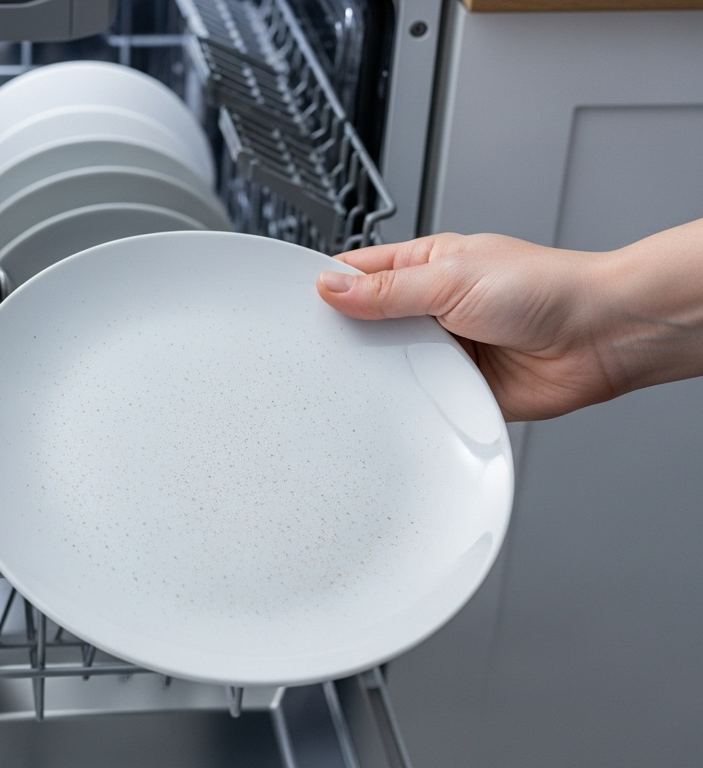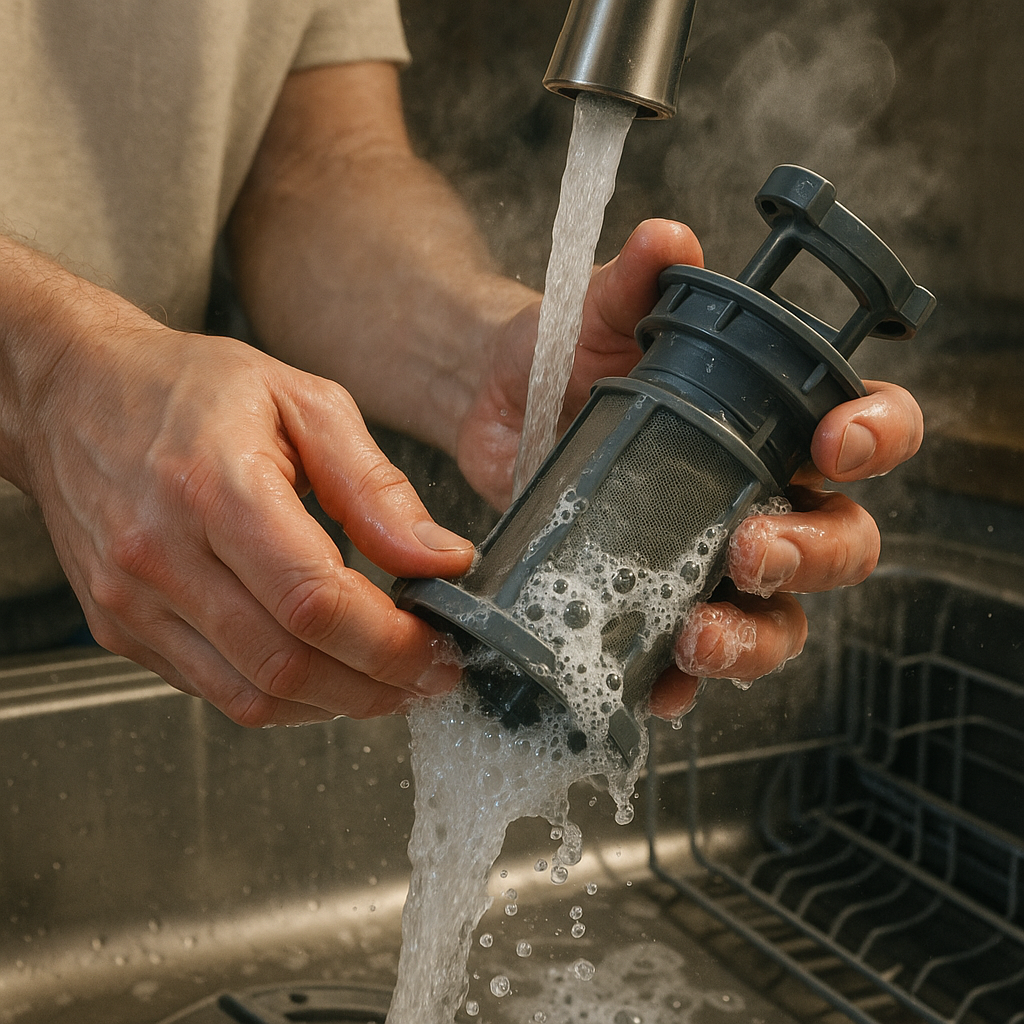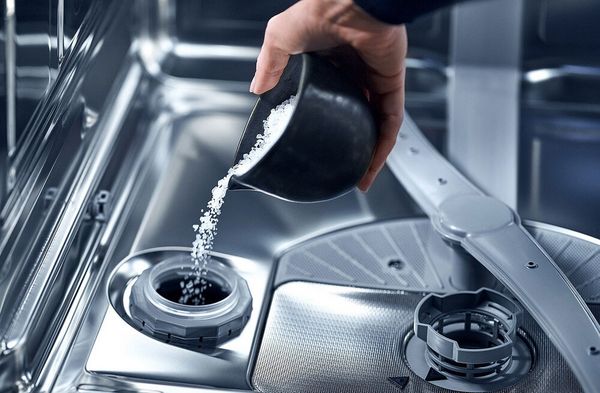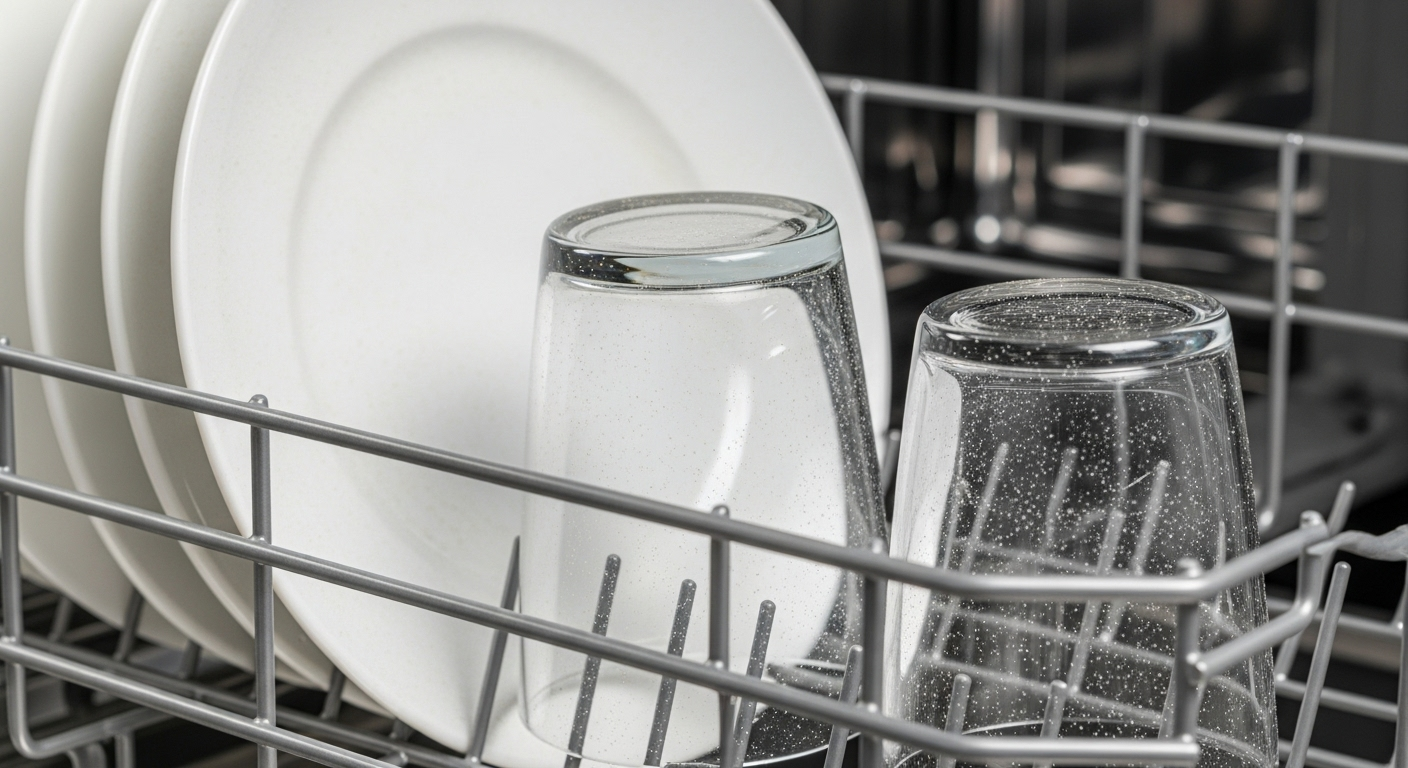Why Your Dishwasher Leaves Gritty Residue
If every load ends with a fine, sandy film on your crockery, you’re not alone. That gritty sand-like residue usually comes from:
- Blocked or dirty filter trapping food particles
- Hard water minerals not being properly neutralised
- Empty or low rinse aid and salt compartments
- Clogged spray arms failing to wash and rinse effectively

1. Clean and Inspect the Filter
The filter catches leftover food and grease. If it’s clogged, water can’t circulate properly and debris ends up redepositing on your plates.
- Switch off and slide out the bottom rack.
- Remove the filter assembly and rinse under hot running water.
- Use a soft brush to dislodge stubborn bits.
- Reassemble and run a rinse cycle to test.

2. Top Up Salt and Rinse Aid
Hard water leaves mineral deposits that look like sand. Dishwasher salt softens water, and rinse aid helps water sheet off without leaving spots.
- Fill the salt compartment until it’s level with the rim.
- Refill the rinse aid dispenser to the max mark.
- Check these levels every month.

3. Unblock and Rotate the Spray Arms
Food debris can lodge in the spray holes, reducing water pressure and coverage.
- Remove the spray arms according to your manual.
- Rinse them under a tap, poking holes clear with a toothpick.
- Spin them manually to ensure they rotate freely.
- Refit and secure them before running a test cycle.

Maintenance Tips for Grit-Free Dishes
Once you’ve banished the sand, keep it that way with a few simple routines:
- Scrape, don’t prewash: Remove large scraps but let the dishwasher do the heavy lifting.
- Use the right detergent: Avoid budget powders; choose quality tablets or liquids.
- Run full loads: A full dishwasher is more water- and energy-efficient.
- Monthly deep clean: Use a dishwasher cleaner or white vinegar in an empty cycle.
- Check water hardness: Adjust salt and rinse aid accordingly or install a water softener.
When to Call a Service Engineer
If grit persists after all these steps, there might be an issue with the pump or inlet valve. Professional servicing can diagnose internal blockages or wear-and-tear that DIY can’t fix.
